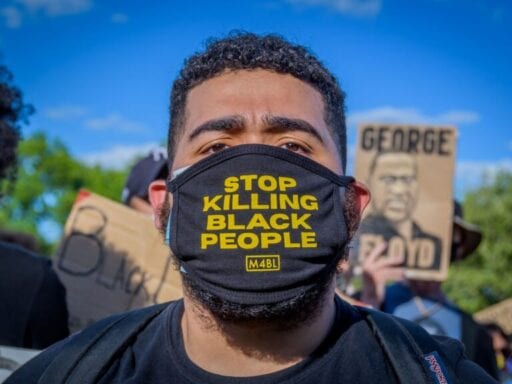“I can’t breathe,” “save me,” the unarmed black man pleads during a traffic stop.
A disturbing new video released Monday by the Austin Police Department shows Javier Ambler pleading for his life as officers restrained him in Austin, Texas. This comes as massive protests have sprung up around the country in response to police brutality — and the clip in question raises alarms because Ambler’s arrest was being filmed for an A&E police-themed reality television show Live PD.
Ambler, whose March 2019 death was ruled a homicide, was black, appeared sober, and was unarmed, according to public records. In the body camera footage, officers restrain Ambler on his stomach and attempt to handcuff him. As they threaten to tase him, Amblers struggles to breathe and repeats, “I have congestive heart failure,” and, “I can’t breathe.” Ambler refers to the officers as “sir” throughout and tells them, “I am not resisting.” He pleads “save me” and gasps for air before officers tase him in the back. “I’m pretty sure I just broke his finger,” an officer says, pulling Ambler’s arm behind him. After being cuffed, Ambler falls limp.
In the clip, deputies attempt to revive Ambler and call EMS, though he remains unresponsive. The medical examiner later found Ambler died of “forcible restraint” along with congestive heart failure and hypertensive cardiovascular disease, according to documents reviewed by KVUE-TV.
According to reporting from the Associated Press, police initially pursued Ambler because he failed to dim his lights on his Honda Pilot and led officers on a 20-minute chase. State documents from the Texas attorney general say that Ambler “exited the Honda Pilot but did not immediately comply with the Deputy’s verbal commands,” and that during the arrest, “two Deputies each deployed their individual tasers” to gain compliance and place Ambler in custody. “Once in custody, Deputies noticed the driver was unresponsive. Deputies were unable to locate a pulse and began chest compressions until EMS arrived and took over life saving interventions,” the report reads.
The video and additional information concerning Ambler’s death comes now after multiple document requests from Austin American-Statesman and KVUE-TV. The Austin American-Statesman’s Tony Plohetski reports the new materials raise concerns among local residents who are concerned about police brutality and “worry that the presence of TV cameras leads deputies to forsake prudent policing for dramatic television.”
Plohetski’s story also notes “some 15 months after Ambler’s death,” the Williamson County District Attorney’s civil rights investigation into the incident is still ongoing, and explains that local officials plan to present the case to a grand jury. Citing a report from Williamson County sheriff’s department internal affairs, Plohetski reports that “there is no indication” that “the deputies faced any action against them or were forced to take time off because of the incident.”
The dangers of driving while black persist nationwide
A black man on his stomach, hands pulled behind his back, officers pressing on his head: the video of Javier Ambler bears a striking similarity to the George Floyd clip that has circulated the globe and sparked worldwide protests. Far from an isolated incident, the video comes the same day as another clip from New Jersey shows the police killing a black man after a minor traffic incident.
Both killings come after years of high-profile police-related deaths of black motorists. Philando Castile’s death started with a “traffic stop”; Sandra Bland’s death began with a “failure to signal”; Walter Scott’s death began with a “faulty brake light”; Samuel DuBose’s death began with a “missing front license plate.” Far beyond cases that end fatally, investigations have often shown police interactions with black drivers to be both punitive and frivolous. According to a New York Times investigation, in Greensboro, North Carolina, police “used their discretion to search black drivers or their cars more than twice as often as white motorists,” and the police “were more likely to use force if the driver was black, even when they did not encounter physical resistance.”
A similar Justice Department investigation following the death of Mike Brown found that, among motorists in Ferguson, Missouri, “African Americans are more than twice as likely as white drivers to be searched during vehicle stops even after controlling for non-race based variables.”
Recent videos, previous cases, and longstanding investigations undergird activists’ concerns that “driving while black” is unnecessarily dangerous. The footage of Ambler’s killing fuels the policy debate about defunding the police and imagining new, less violent forms of civil service emergency response for public services, including traffic control.
Support Vox’s explanatory journalism
Every day at Vox, we aim to answer your most important questions and provide you, and our audience around the world, with information that has the power to save lives. Our mission has never been more vital than it is in this moment: to empower you through understanding. Vox’s work is reaching more people than ever, but our distinctive brand of explanatory journalism takes resources — particularly during a pandemic and an economic downturn. Your financial contribution will not constitute a donation, but it will enable our staff to continue to offer free articles, videos, and podcasts at the quality and volume that this moment requires. Please consider making a contribution to Vox today.
Author: Aaron Ross Coleman
Read More



